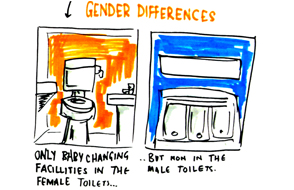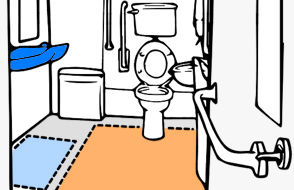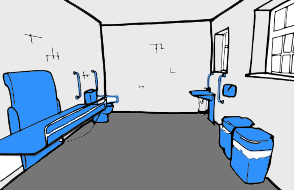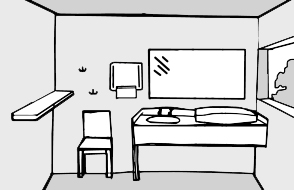Parks are spaces often visited by children and families, but often toilets, if they exist at all, do not cater for their needs. This scene focuses primarily on access for a range of families.

Park Toilets
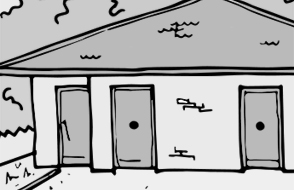
«
»
«
»
Managing noise
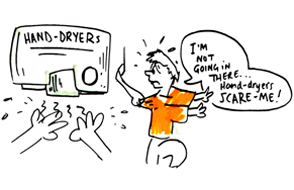
The noise of hand dryers, and their unpredictability when accidentally turned on, can be stressful and painful for some people, including but not limited to people with autism or hearing impairments.
Ensure hand dryers do not impede on navigational space.
Family Facilities

Offering separate family facilities outside of the male, female and disabled toilets allows parents of a different gender to their children, and non-binary and trans parents and children, to use toilets together without discomfort.
Private and communal options for washing
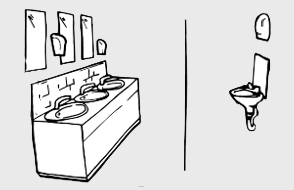
It is important that there are facilities for washing in private cubicles.
This can provide an option for private washing and minimises the possibility of people's presence in toilet spaces being questioned by others in relation to gender identity.
Keeping toilets clean

Toilets are not comfortable spaces if they are not cleaned regularly and thoroughly.
It is useful to think about the cleaning of toilets in the early stages of the design process, with easy to clean surfaces and facilities.
Taps and soaps dispensers which are easy to reach and use
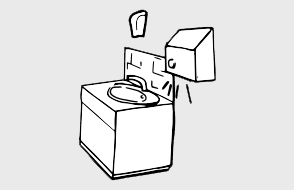
Taps and soap dispensers should be within reach and simple to use. This allows people who have limited reach and dexterity to use these facilities easily.
Taps and soaps dispensers which are easy to reach and use

Taps and soap dispensers should be within reach and simple to use. This allows people who have limited reach and dexterity to use these facilities easily.
Natural Daylight

The design of toilet spaces is often overlooked, and they can be dark and unpleasant spaces to use. Consider the importance of windows or skylights to bring natural light into the space.
Mirrors at appropriate heights for different users

Mirrors can sometimes be positioned too high for a person in a wheelchair or too low for other people. Consider using full-length mirrors that meet the requirements of many users.
